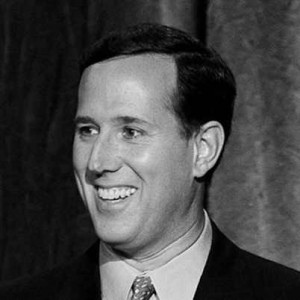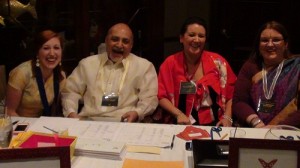Archive for category July 2012
Refreshing Results in the Spring Primaries
The primaries held in Pennsylvania on April 24 yielded some surprise winners and losers—also some refreshing self-revelations. Our region is stuck with its image as a steel town with strong ethnic roots and union activism. Politically, our voters are labeled as Democratic-leaning social conservatives. This may be changing albeit in small ways, if you go by what happened in the Spring primaries.
In these days of polls and trends, surprises during primaries are rare. But this time we had a few surprises. On the basis of 2010 census figures, Pennsylvania’s declining population lead to the loss of one congressioÂnal seat. With the death of the powerful Democratic Congressman John Murtha, his district in and around Johnstown, PA was eliminated, and was subsumed into the neighboring congressional districts. Congressman Jason Altmire, whose district was redrawn, was expected to face some hard times in the Democratic primary.
 The Democratic Jason Altmire, who scored a big victory against Republican Melissa Hart when he was first elected to the US House of Representatives four years ago, turned moreconservative in an effort to court the more conservative bloc of voters in his district. This was not difficult for him given his lobbyist background prior to becoming a politician. But Altmire’s change of heart — and changes in his political beliefs — won him no friends among the working-class voters in his redrawn district. Even as he won Butler and Allegheny counties, he was bested by Mark Critz from Allentown and erstwhile staffer of the veteran congressman John Murtha. Altmire ran afoul of the labor unions in the district that vowed to defeat him. Also his unpopular vote against Obama’s healthcare bill earned him many enemies among some voters.
The Democratic Jason Altmire, who scored a big victory against Republican Melissa Hart when he was first elected to the US House of Representatives four years ago, turned moreconservative in an effort to court the more conservative bloc of voters in his district. This was not difficult for him given his lobbyist background prior to becoming a politician. But Altmire’s change of heart — and changes in his political beliefs — won him no friends among the working-class voters in his redrawn district. Even as he won Butler and Allegheny counties, he was bested by Mark Critz from Allentown and erstwhile staffer of the veteran congressman John Murtha. Altmire ran afoul of the labor unions in the district that vowed to defeat him. Also his unpopular vote against Obama’s healthcare bill earned him many enemies among some voters.
Mark Critz will face Republican Allegheny County attorney Keith Rothfus in the Fall elections. Altmire may have to go back to what he does best – lobbying for his clients in Washington DC.
Another sweet victory in the primaries was Republican D. Raja’s for state senator. Raja’s Republican opponent Mark Mustio ran a vicious, blatantly racial campaign in the waning days of  the primary. He printed pamphlets and TV commercials, expanding the D in Raja’s name — Dakshinamurthy Raja — in an effort to make him sound foreign and un-American. Raja, an entrepreneur who founded a company in Western PA was falsely accused of outsourcing jobs. Even the Post-Gazette, which initially supported Mustio, in a very rare deciÂsion, reversed its endorsement of Mustio in the face of the virulence in Mustio’s racial ads. The citizens of the 37th District too sent a strong message against blatant racist propaganda by electing D. Raja as their Republican nominee. Now, Raja is likely to walk into the Commonwealth of Pennsylvania’s Senate chambers if he faces no Democratic opposition in the Fall election.
the primary. He printed pamphlets and TV commercials, expanding the D in Raja’s name — Dakshinamurthy Raja — in an effort to make him sound foreign and un-American. Raja, an entrepreneur who founded a company in Western PA was falsely accused of outsourcing jobs. Even the Post-Gazette, which initially supported Mustio, in a very rare deciÂsion, reversed its endorsement of Mustio in the face of the virulence in Mustio’s racial ads. The citizens of the 37th District too sent a strong message against blatant racist propaganda by electing D. Raja as their Republican nominee. Now, Raja is likely to walk into the Commonwealth of Pennsylvania’s Senate chambers if he faces no Democratic opposition in the Fall election.
The final act in Western Pennsylvanians’ verdict was the abrupt derailment of Rick Santorum’s Presidential — and maybe also his Veep — ambitions. Rick Santorum, who was doing well in the latter part of the Republican primaries, particularly in the South, with his socially and  religiously conservative platform, suddenly found himself out of sync with his own hometown voters who elected him both as a congressman and also as a two-term US senator. His extremely conservative message this time around had few takers in PennsylÂvania and in his native Pittsburgh region. After all, the state and the region had already sent Santorum packing in his last Senate race. With lack of funds and support, the Santorum Express ground to a halt in Pennsylvania and he dropped out of the presidential primaries to avoid loss in his own home state. Having gotten all the face time and the media attention in the pre-primary season and during the long primaries with nearly twenty debates, he will be back for in 2016 if Mitt Romney loses in November.
religiously conservative platform, suddenly found himself out of sync with his own hometown voters who elected him both as a congressman and also as a two-term US senator. His extremely conservative message this time around had few takers in PennsylÂvania and in his native Pittsburgh region. After all, the state and the region had already sent Santorum packing in his last Senate race. With lack of funds and support, the Santorum Express ground to a halt in Pennsylvania and he dropped out of the presidential primaries to avoid loss in his own home state. Having gotten all the face time and the media attention in the pre-primary season and during the long primaries with nearly twenty debates, he will be back for in 2016 if Mitt Romney loses in November.
Thus the primaries ended in Western PA this Spring with refreshing changes in the political landscape. Now we need to brace ourselves, through Summer continuing into Fall, for a barrage of negative ads and character assassinations, which have become hallmarks of election year politics in these days of SuperPACs.
An Appeal for Readers to Register to Vote and then Vote in NoÂvember: No matter what your political affiliation is, please make it a point to go and vote in November. The people who run your polling booths are volunteers living in the communities where you live. It is imperative that they see the Indian-Americans taking their civic duties seriously by exercising their voting rights in every election.
But to vote in the November election, you need to register yourself to be eligible to vote. If you have voted in the last general elections in your local district where you live now, you are already registered. If you want to register to vote, go to this website and get the details:
www.votespa.com/portal/server.pt/community/home/13514 ï®
Ask a Professional Wedding Planner
By Erin Calvimontes, Divine Celebrations, Pittsburgh PA
www.PittsburghIndianWeddings.com
Phone: 412-436-0337
Also visit us on FaceBook — Divine Celebrations
Erin Calvimontes specializes in Indian Wedding traditions and décor and has been in the wedding industry for 25 years. Erin is a PBC- Professional Bridal Consultant, a certified event professional. She is a member of the Association of Bridal Consultants, Co-Director of ABC in Western PA, and a member of ISES Pittsburgh Chapter.
Planning a wedding can be very overwhelming for brides and their families. So, hiring a professional wedding planner to guide you through the planning process can be the best thing you do, saving you time, money, and less stress!
Here are questions from REAL Brides & Mothers of the Brides:
Q: What is the first thing I should do to get started? Sangeeta R.
A: I recommend all my clients get a solid guest list from both sides of the family. This will help you determine everything from venue size to budget.
Q: How do you estimate a realistic budget? Deeba Mahmood
A: You and I talk about all your needs and details of the wedding weekend. I then put toÂgether a detailed realistic budget for you. I have many years of experience with service providers and venues and know what they can cost. I also do the research of service providers and venues for you, saving you time and money.
Q: How many meetings are included in your full service package? Nalina Prabhu
A: You get unlimited meetings, communication and service provider contacts with our full service package. Collecting all the details throughout the planning process is very important to ensure a flawless event so my clients can relax on the special day.
Q: How do you handle conflicts between families of different cultures? Judy Karam
A: I help communicate and educate both sides on the others’ cultural traditions. I work very hard to blend the cultures and respect both famiÂlies’ needs and de-stress the situation by coming up with alternatives to the conflicts.
Divine Celebrations has a large network of professional service providers for all your wedding needs. If you have wedding questions, please e-mail us:
design@divinecelebrations-events.com
and we will answer them promptly.
Full service, partial planning, and “Month of Event†manageÂment available and more…
Extensive knowledge and exÂperience in South Asian as well as traditional Western ceremoÂnies and events.
You are invited to be a Guest at your own Wedding.
Silk Screen’s Sixth Multicultural Gala
 By Merritt Wuchina, PR and Marketing Intern for Silk Screen
Silk Screen has pulled off an amazing night yet again. To open its Seventh Annual Asian American Film Festival, the organization hosted a multicultural Gala on Friday, May 11 at the Rivers Club in Oxford Center. Nearly 500 guests attended, with many of them wearing ethnic dress such as Indian saris, Japanese kimonos and Chinese changshans.
For some guests, the night started at the Harris Theater with an OpenÂing Night screening of Luc Besson’s The Lady, a biopic about Burmese democratic leader Aung San Suu Kyi.
This was the first year Silk Screen hosted the Gala at the Rivers Club, which provided new rooms for different activiÂties. First, guests were invited into the “screening room†to watch trailers from the festival’s lineup while enjoying appetizers and drinks.
Guests also bid on a variety of silent auction prizes, including a series of miniature paintings by Silk Screen’s Founder and Executive Director himself, Harish Saluja.
Saluja, an artist, filmmaker and entrepreneur, started Silk Screen as a 501(c) 3 nonprofit in 2005 in an effort to educate the Pittsburgh community about Asian and Asian American culture through the media arts. The Gala’s success was made possible by the hard work of Saluja, Operations Manager Katie Jones, Volunteer and Programming Coordinator Ruby Jain, and a team of employees, interns and volunteers.
Later in the evening, guests dined on Indian, Chinese and Middle Eastern food from various local restaurants. Performers like the Steel
Dragon Lion Dance Team, Yanlai Dance Academy, the Pittsburgh Iranian Dance Group and more filled the room with delightful costumes, color and sounds.
Between acts, WTAE anchor Sally Wiggin kept the night moving along as the Gala’s entertainÂing emcee.
A notable attendee was Pittsburgh-born actor Manu Narayan, the star of Good Night, Good Morning, a US/Indian film featured in this year’s festival lineup.
“This festival gives glimpses into other culÂtures and I feel like it’s very important,†Narayan said.
The Gala and Festival also left an impression on Jeremiah Jackson, the Director of Diversity at Sewickley Academy.
“It’s for a tremendous cause,†Jackson said. “It really helps bring awareness of a lot of cultural things, a lot of issues that are happening in the world, and it just helps people come together in a unique and exciting way.â€
The festivities ended with an eclectic dance party mix of music rangÂing from Brazilian pop to Indian Bhangra provided by Global Beats DJ Carla Leininger.
At the end of the night, guests returned home to rest up and get ready for a mind-opening week of diverse films from across the Middle East and Asia.
The Colonial Holdover of India Lingers On
The lethargic attitude of Indian bureaucrats is legendary. Here is a fine example, which also doubles as a metaphor for Indian upper crust’s mindset.
Readers of this magazine have seen in airports planes from different countries — Lufthansa (Germany), Air France (France), British Airways (England), Delta (US), Gulf Air and Emirates (UAE), Nippon Airlines (Japan), Jet Airways (India); and of course, Air India.
The curious among you also would have noticed that somewhere below the tail of planes on either side are inscribed alpha-numeric characters. The first or the first two letter-number combinations near the tail of the plane identify the country in which the plane is registered.
For example, all commercial and private planes’ ID numbers registered in Canada would start with C, for Canada. For planes from Germany, it is D for Deutschland. Planes registered in France starts with F. United Kingdom starts with G, probably G for Great Britain, even though it is not great anymore in several measures. For planes registered in the US, the plane’s ID number starts with N, probably standing for North America since aviation started here.
For India, it is VT. Why VT? Well, it is a holdover from India’s colonial past. VT, assigned to India in the 1920s, stands for Viceroy’s Territories — viceroy of the not-so-great Britain, of course! Most of the ex-British colonies have the names starting with V. Australia is VH; Hong Kong, VR; Falklands, VP-F; Bermuda, VP-B… …
India became independent naamke-vaaste in 1947, and it became a nominal republic in 1950. It wants to be a regional superpower and a permanent member in the UN Security Council. But the colonial mindset of India’s babudom (bureaucracy) and its middle class is still very much intact. For, even after 60 years after becoming a republic, they haven’t found a reason to change the identification numbers for planes registered in India to, say, Bharat, or India, or Hindustan, or anything other than VT — Viceroy’s (or Viceregal) Territories.
A Letter to the Indian Community in the Pittsburgh Metro Area
www.longwoodathome.org www.ongwoodatoakmont.com/
412-826-6120 or e-mail: GSmith@srcare.org
“Longwood at Home†was developed ten years ago, as an alternative to the traditional residential continuing care retirement community. This comprehensive long-term care plan has successfully made “aging in place†a reality for over 280 older adults in Western Pennsylvania. Healthy older adults join Longwood at Home with the assurance that future care needs will be managed by a personal care coordinator (social worker) and covered by a fixed monthly fee. In-home services include homemaker-companion, home health aide, licensed nurse, nutritional assistance, transportation for medical needs, and emergency response system. Your membership guarantees asset preservation, generous tax benefits, personal care coorÂdination, excellent home care, and, if ever needed, access, availability and financial coverage at local not-for-profit assisted living/personal care and nursing centers.
Unlike long-term care insurance, which provides only a financial reimbursement for care, Longwood at Home offers a more proactive apÂproach to aging with dignity. Your personal care coordinator knows and understands personal and cultural needs as well as your medical history. By getting to know you when you are healthy and independent, your care coordinator is equipped and able to immediately respond to changes in health and evolving needs throughout the aging process. The personal care coordination is a benefit to the member of Longwood at Home but is also appreciated by adult children who often live out of town and are busy with families and careers. We serve members from diverse ethnic and religious backgrounds, striving to provide the very best in-home caregivÂers, while remaining sensitive to specific cultural, religious and personal preferences of each individual.
Longwood at Home is the first and only “at-home†continuing care retirement community in western Pennsylvania. This program has been recognized as a leader both locally (“Aging in Place Requires Good Fortune and Support Services,†Pittsburgh Tribune-Review, January 22, 2012 (www.pittsburghlive.com/x/dailynewsmckeesport/s_777699.html) and nationally (Wall Street Journal, “Joining a Community by Staying at Home,†April 9, 2012 http://online.wsj.com/article/SB10001424052970204571404577253821107409372.html).
The concept of an “at-home†community appealed to Dr. Balwant & Mrs. Vidya Dixit, when they attended an informational seminar in 2010. Dr. Dixit has since worked with Grace Smith of Longwood at Home, to 20 The Pittsburgh Patrika, Vol. 17, No. 4, July 2012 communicate the specific cultural, religious and personal preferences of individuals within the Indian community. Longwood at Home’s compreÂhensive approach to understanding not only the medical history, but also the personality, cultural history and lifestyle of each member made this program especially interesting to Dr. & Mrs. Dixit.
Longwood at Home would be honored to host informational seminars for your group. Our staff would gladly present at one or both of your two temples or at an Indian restaurant if that is more comfortable for you. This will give you the opportunity to learn the specifics of Longwood at Home and have your questions answered by our staff. We look forward to sharing our enthusiasm with you. n
Tagore’s Tasher Desh in English
Nandanik Dance Academy Renders
By Kaushik Mitra, Moon Township, PA
 On April 21st, 2012, Nandanik Dance Academy presented the dance drama Tasher Desh or “Card Country†— one of the more difficult dance dramas of Nobel Laureate Rabindranath Tagore. The venue was the Chartiers Valley Intermediate School Auditorium.
On April 21st, 2012, Nandanik Dance Academy presented the dance drama Tasher Desh or “Card Country†— one of the more difficult dance dramas of Nobel Laureate Rabindranath Tagore. The venue was the Chartiers Valley Intermediate School Auditorium.
With a captivating collaborative presentation, Nidrita Mitra Sinha and Mary Miller, perfectionists by their own right, set the tone for the evening.
 Tasher Desh started with a blaze. A prince and his friend – a merchant – set out onto the open seas. Hit by a tempest, shipwrecked, they are cast ashore onto a strange land – the land of cards. The inhabitants are stiff and rigid like cards, and so are the dogmas that hold their society together. What follows is a story of intense internal conflict between the quest for the free mind and the shackles that hold it down.
Tasher Desh started with a blaze. A prince and his friend – a merchant – set out onto the open seas. Hit by a tempest, shipwrecked, they are cast ashore onto a strange land – the land of cards. The inhabitants are stiff and rigid like cards, and so are the dogmas that hold their society together. What follows is a story of intense internal conflict between the quest for the free mind and the shackles that hold it down.
The performance was brilliant. Sanjib Bhattacharya and Nandini Mandal graced the stage with élan and ease. The coordination was flawless, the energy unbridled. The diaÂlogues were in EngÂlish to the benefit of a large part of the mostly mainstream audience unfamilÂiar with the Bengali language. What unÂfolded was a mesÂmerizing journey to a far-off land. The acting was natÂural, the dancing unflawed. The choÂreography, directed by Nandini Mandal and Sanjib Bhattacharya, was a seamless blend of Bharatanatyam, Chhau, Manipuri and Navanritya styles. The music by Pramita Mullik was fresh and refreshing. Attention to detail oozed – from the colorful and creative costumes, to the props and to the perfection of the youngest of dancers.
So, how does Tasher Desh stack up against past Nandanik producÂtions? It is high up there. We missed the magical use of light we saw in “Shyama†but that perhaps was an inadequacy of the facilities at hand.
Could something have been better? The accent of the English dialogues, possibly. But the shortcomings were trivial. Magic was in the air and it weaved a Card Country in a far off land that we, the audience, felt blessed to trespass as we waited with abated breath for the free mind to emerge victorious – trouncing the shackles that bind it.
Developing “Ability Awareness”
By Mona Chabra
e-mail: mona15143@yahoo.com
Nisha can’t wait to meet Preeti, her new neighbor from India. Preeti looks nice and Nisha thinks they can be good friends. But, Nisha feels a bit apprehensive. She’s never had a friend with challenges before.
Society typically views people with disabilities as pariahs or non-people, but the South Asian sector has always magnified these negative perceptions more than others.
Although South Asians generally are well-educated in the sciences, technologies, management and healthcare, when it comes to disability awareness they usually lag far behind. Fortunately, everyone has the ability to change.
Most people react to disabilities with sadness and remorse. They might say things like, “So sorry you’re disabled.†People need to realize that the state of being disabled is not good or bad. It’s simply a state of being… just as a person is Chinese, Indian, male or female, How would you like if someone said to you, “So sorry you’re Indian!â€
Disability is essentially a culture in itself. People from the disabled culture seek acceptance just as people from all cultures do.
Some people feel uneasy about approaching individuals with challenges. The best way to eliminate this uncertainty is to learn about disabilities and interact with the people who have them. Here are some basic ideas to help.
• No two people are the same. Some differences are just more noticeÂable.
• People with disabilities are people, not disabilities!
• A disability is only one characteristic of a person. We all have strengths and challenges!
• People with disabilities have many ABILITIES.
• Treat friends with disabilities like any friends. Invite them to come to your house or go out. Make sure the place you plan to meet is physiÂcally accessible to them.
• Don’t treat people with challenges as if they’re stupid. They may actually be smarter than you!
• Utilize clear, respectful language when talking about individuals with disabilities. Use terms like “person with disabilities†instead of “disÂabled person†and “person who uses a wheelchair†instead of “wheelchair personâ€.
• NEVER use the terms “deaf and dumbâ€. A person who has hearing issues might be “hearing impaired,†“deaf,†or “deaf and mute.â€
• Don’t talk loudly. Speak in a normal tone. Most people with disÂabilities can hear fine. If they can’t, they’ll let you know.
• Everyone is normal. We define our own version of “normal.â€
• When talking to a person with speech or hearing impairments, speak normally and face the person to make lip-reading possible. If you don’t understand someone, don’t pretend you did. Ask the person to say it again slowly and/or louder.
• Remember that canes, wheelchairs and other medical assistive devices are an extension of the person with disabilities and should not be leaned on, tampered with, stared at or played with.
• Don’t be rude. People tend to ignore those with challenges and act as if they’re invisible. When people don’t know how to act around indiÂviduals with disabilities, they usually avoid them.
• Live by the golden rule: Treat others the way you want to be treated!
By learning about the different ways to communicate with challenged individuals and focusing on abilities instead of DIS-abilities, we can build a world without social barriers and stereotypes. Increasing our awareness about those who are “DIFFERENTLY ABLED†will help ensure a more accepting society for everyone. ï®
Something to Ponder Over When You Leave for Colleges
 By Kollengode S Venkataraman
 Our graduating list gets more impressive every year. Over sixty of you young men and women are leaving for universities, and three or four times that many are entering high school this Fall from our area. Congratulations, and a few words for you to ponder over before you start your classes.
By now all of you would have read Dharun Ravi’s case in New Jersey. Ravi was sentenced to a 30-day jail term for videotaping while at Rutgers his gay college mate Tyler Clementi’s intimate private moments, and then tormenting him by making the information public. Feeling harassed by the involuntary exposure of his homosexuality, Clementi killed himself by jumping off a New York bridge.
 Beyond the narrow legalities, there are ethical issues here for you.
 Being a minority yourself on many counts, while growing up here, some of you would have felt uncomfortable for getting singled out and made fun of, often unintentionally and in jest, by your “mainstream” buddies. This experience has been a rite of passage for every new immigrant group in the US who came before us – Italians, the Irish, the Polish, Jews… . The Black experience is very harsh on account of slavery and race.
This experience notwithstanding, when you go to school this Fall, most of you will actively seek entry and acceptance into the “American mainstream,” however you define it. An easy way to achieve this, you may think, is to outdo your “mainstream” buddies in internalizing their collective likes and dislikes, do’s and dont’s. This is natural, unavoidable, even understandable.
In your efforts to meld with the American mainstream, you will be serving yourself better by reminding yourself that as the latest arrival into this country, you are yourself a minority. Also remember, by many objective measures, many of you belong to what can be called a “privileged minority.”
 Therefore, whatever you do to find acceptance, do not offend or humiliate your classmates on account of who they are and what they are.
After all, you had no say on where you were born and which family you were born into; or the ethnic and religious background you inherit. And, you certainly had no choice on the combinations of chromosomes and the DNA with which you were born.
 So, temper your youthful, tribal instincts to find acceptance into your group, and use your sense of fairness, and do not do to others what you would not like done to you.
All the best in Fall. Have fun and widen your horizon with what you see and hear both inside and outside the classroom.
Fasting Helps Remove Waste at the Cellular Level
 By Kollengode S. Venkataraman
 In February 2012, Gretchen Reynolds’s article* in the New York Times discussed the benefits of physical exercise in terms of “house-cleaning of the body” at the cellular level. For the biologically challenged engineers, technologists, doctors and others: Cells are the basic structural and functional units of all living organisms. They are the building blocks of life itself. Living organisms can be very simple unicellular species such as bacteria, or can be multicellular like plants and animals. Humans are composed of several trillion cells of different types in different combinations, varying in size between 1 to 100 microns visible under microscopes. One micron is 1/1000th of a millimeter.
*http://well.blogs.nytimes.com/2012/02/01/exercise-as-housecleaning-for-the-body/?src=rechp
What follows in italics is my summary of a part of Reynolds’ longer article. The words within quotes are Reynolds’ own words.
We all know about the benefits of physical activities and exercise: Good blood circulation and working the muscles and joints help to scavenge out the waste products of metabolism that accumulate in the body. We feel fresh and rejuvenated.
Cell biologists have known for a long time that waste products accumulate in cells during routine daily activity. These trash heaps of debris contain “broken or misshapen proteins, shreds of cellular membranes, invasive viruses or bacteria, and worn-out, broken-down cellular components … … within cells.”
Often cells sweep away these waste products, sometimes even wrapping them in special membranes within the cells and breaking them into simpler bits (or oxidizing them) to generate energy. This process is called autophagy, literally “self-eating.” Without this efficient cleaning system, the trash would congest the individual cells, and the healthy cells would die. Faulty autophagy is believed to be at the root of many diseases such as diabetes, muscular dystrophy and others. The slowing down of autophagy is believed to contribute to aging.
The self-cleaning autophagy, cell biologists believe, evolved in living organisms in response to the stress associated with starvation when living organisms on and off did not get enough food. When food is scarce, “cells would round up and consume superfluous bits of themselves to keep the rest of the cell alive. In petri dishes, the rate of autophagy increases when cells are starved or otherwise placed under physiological stress.”Â
Exercises are physiological stress. But until recently, few researchers had thought to ask whether exercise might somehow affect autophagy within cells, and if so, what their influences to the body as a whole are. In controlled experiments, researchers found that mice having better autophagy were able to stay active before getting fatigued compared to the mice having poorer autophagy built into their cells.
I was astonished at how nature works in preserving its species even during starvation through autophagy. Starvation is externally imposed. Lower animals’ and plant species’ only response to starvation is to adapt or die. Animals starve when food is scarce, as when monsoons fail, or during massive deforestation, or new aggressive and voracious species are introduced in their habitats depriving food to existing species.
Human beings too have to adapt to changes from outside. But humans have the capacity to proactively bring about changes using their will power, as during fasting. Fasting, of course, is different from starving. The driving force for fasting is the power of the will where everything edible is available, but you do not eat them by choice by exercising your willpower. Since you do it by choice, you do not feel deprived.
In India, many traditional observers of religious rites periodically practice what is known upavaasam – literally meaning “subsistence living.” Jains and many Hindus fast for several days during the Chatumaas in the rainy season. Hindus fast on Ekadashi – the entire 24-hour duration of the eleventh phase of the waxing and waning moon every month. Muslims too, once a year, fast for 12 hours or longer during Ramadan.
Can human beings, using their willpower, deny their body food so that at the cellular level, they can initiate autophagic “housecleaning” and burn the cellular-level wear debris into energy, as can happen during fasting? The answer seems to be”yes.” If you web-search the phrase “Fasting and Autophagy,” you get a ton of affirmations from practitioners of fasting and even scientific studies on the subject.
So, is it worthwhile complementing daily exercise with fasting once a month for 24 hours, as many traditional Jains and Hindus practice even today?
It definitely is worth trying, provided you have the willpower to deny yourself of food for twenty-four hours in this gluttonous part of the world! ï®
Sarcasm and Humor in Sanskrit Literature
Beyond devotional hymns, mantras for pujas, Yogasutra and Kamasutra, there is more to Sanskrit — such as treatises on grammar, music, dance, astronomy, geometry, medicine, surgery and statecraft. When all these heavy subjects are in Sanskrit, humor and sarcasm cannot be far behind.
Here is an example of sarcastic wit in classical Sanskrit one finds in Economics of Lord Mahavira by Acharya Mahaprajna (Publishers: Jain Vishwa Bharti, Rajasthan, India, 2001). The Acharya’s thesis is that simply correlating wealth accumulation and consumption with happiness is a wrong way to assess progress. He avers that this is sure to lead to personal disenchantment. When accumulation of wealth leads to high material inequities as it is now globally, we can infer that it can also lead to social strife.
While pleading for moderation and social responsibility, the Acharya makes it clear that poverty is a curse. Sannyasam (renunciation) becomes a problem if not done with the correct attitude. Otherwise the sannyasis (renunciates) — and married priests as well — become parasites since they expect married lay householders to support them. We see this in all religions. In making the case against poverty, the Acharya uses biting wit to convey his message.
In Patanjali’s Yoga Sutras, one of the siddhis (accomplishments) for an adept yogi is that the yogi can make himself so small that he invisible to others. This siddhis is called aNimaa. This, the yogi accomplishes, after a long and strenuous practice of what Patanjali calls Samyamas.
The Acharya, quoting a Sanskrit verse, says in sarcastic humor that without having to go through all the arduous Yoga practice, one indeed becomes invisible in society when afflicted with poverty. Acharya Mahaprajna is referring to the reality of successful/famous people not even recognizing their poverty-stricken relatives and friends in social gatherings (such as weddings).
Here is the Sanskrit verse dripping in Sarcasm, composed by an unknown poet afflicted by poverty, who had seen better days:
 Translation:
Translation:
In the October 2011 issue, we had published a medieval Sanskrit verse composed in the 16-syllable Anushtub-chandam like most of the verses in Bhagavadgita. We deliberately did not give the meaning, hoping that a few readers would ask for its meaning. And a few of you did. Here is the original verse in the Devanagari script:
Here is the translation of the verse addressing a Vaidya, or a doctor:
 O, Doctor, the brother of Yama (Death)! Salutations to you. Yama only steals [people’s] lives. But you, doctor, steal [people’s] lives and money as well.
So, the contentious relationship between doctors (and the healthcare industry) and patients we see today in the US and in India is nothing new. ♠



